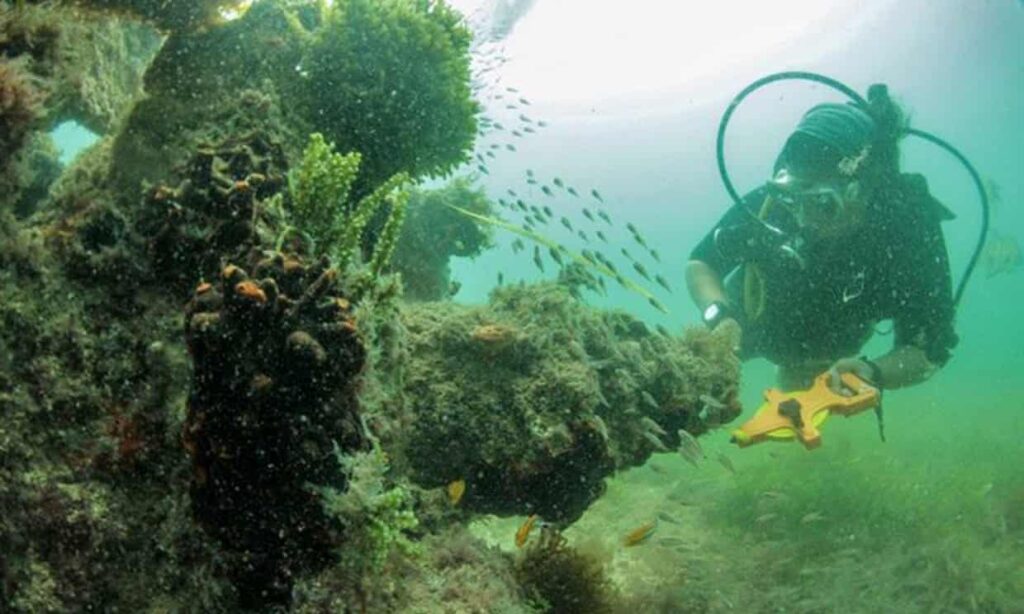Researchers Will Search for Spanish Treasure Ship
Nearly 400 years after storms sent one of Spain’s greatest treasure galleons on to the sea outside Mexico, archaeologists from the two countries are to renew their search for the ship and its precious cargo of gold, silver, and jewels.
According to the storm hit, the omens for the Nuestra Señora del Juncal’s return voyage in October 1631 were decidedly ill. A day before the fleet of which it was a part set sail from Mexico, its commander died. The ships pressed on even though the Juncal was in a poor state of repair and taking on water.

After weathering a fortnight’s storms, cutting the main mast and tossing cannons and other heavy objects overboard in a desperate attempt to lighten the ship, the crew could do no more. Of the 300 people on board, 39 survived by climbing into a small launch.
In May, underwater archaeologists from Spain and Mexico will begin a 10-day search for the Juncal. It is hoped that the work will be just the beginning of a two-decade-long scientific and cultural collaboration.
The joint project, which comes six years after Spain and Mexico signed a memorandum of understanding over their shared underwater cultural heritage, aims not only to locate and protect the Juncal but also to train a new generation of Latin American underwater archaeologists.
Dr. Iván Negueruela, the director of Spain’s National Museum of Underwater Archaeology, has been working closely with Roberto Junco, the deputy director of underwater archaeology at Mexico’s National Institute of Anthropology and History. Negueruela said the team had done its calculations and the chances of finding the ship were looking very promising.
“Because the cargo was so valuable – it was carrying lots of ingots – the authorities had a detailed inventory,” he said. “The survivors were also questioned in-depth and their statements help us to reconstruct what happened with quite a high degree of accuracy, so we have a fairly good idea of where the ship sank.”
The Juncal is thought to have been carrying between 120 and 150 tonnes of precious materials, dwarfing the 14 tonnes of cargo recovered from another Spanish wreck, the Nuestra Señora de las Mercedes, in 2007.
Negueruela said the Juncal was transporting riches beyond silver and gold from the New World, among them cacao, dyes and animal hides. Anything organic is unlikely to have survived four centuries of sitting in saltwater, however.
The priority from an archaeological point of view is securing the site and carrying out a methodical, exhaustive and transparent excavation. “When you have a cargo of such extraordinary riches, you’ve got to be totally transparent about what you’re doing, whether you bring up two tonnes of silver or a single silver spoon,” said Negueruela.
“We also want this to serve as a training ground for young underwater archaeologists from Latin America so that countries don’t find themselves at the mercy of pirates and treasure-hunting companies. There will be grants to allow two or three young archaeologists to come out with us each year to train.”
The idea is that within eight or 10 years there will be a group of young, well-trained archaeologists in each country where they’re needed.
“We older archaeologists are running out of time and we need to train up young archaeologists so that we can leave the seabed in good hands,” said Negueruela.
For him, the Juncal’s true riches are not its cargo but the vessel itself – and the chance, for once, to get to a wreck before the treasure hunters do.
“I’m really keen to discover exactly how the ship was constructed and to see how the bulkheads and the decks were put together,” he said.
“We’ve seen that with Mary Rose and the Vasa in Sweden. I want to know exactly how a galleon looked in the first half of the 17th century, and that’s fundamental: where were the sleeping quarters, the stores, the latrines, the eating areas. We know about them from drawings from the archives from the 16th to 18th centuries but we’ve never excavated them. This is such a rich source of information.”





